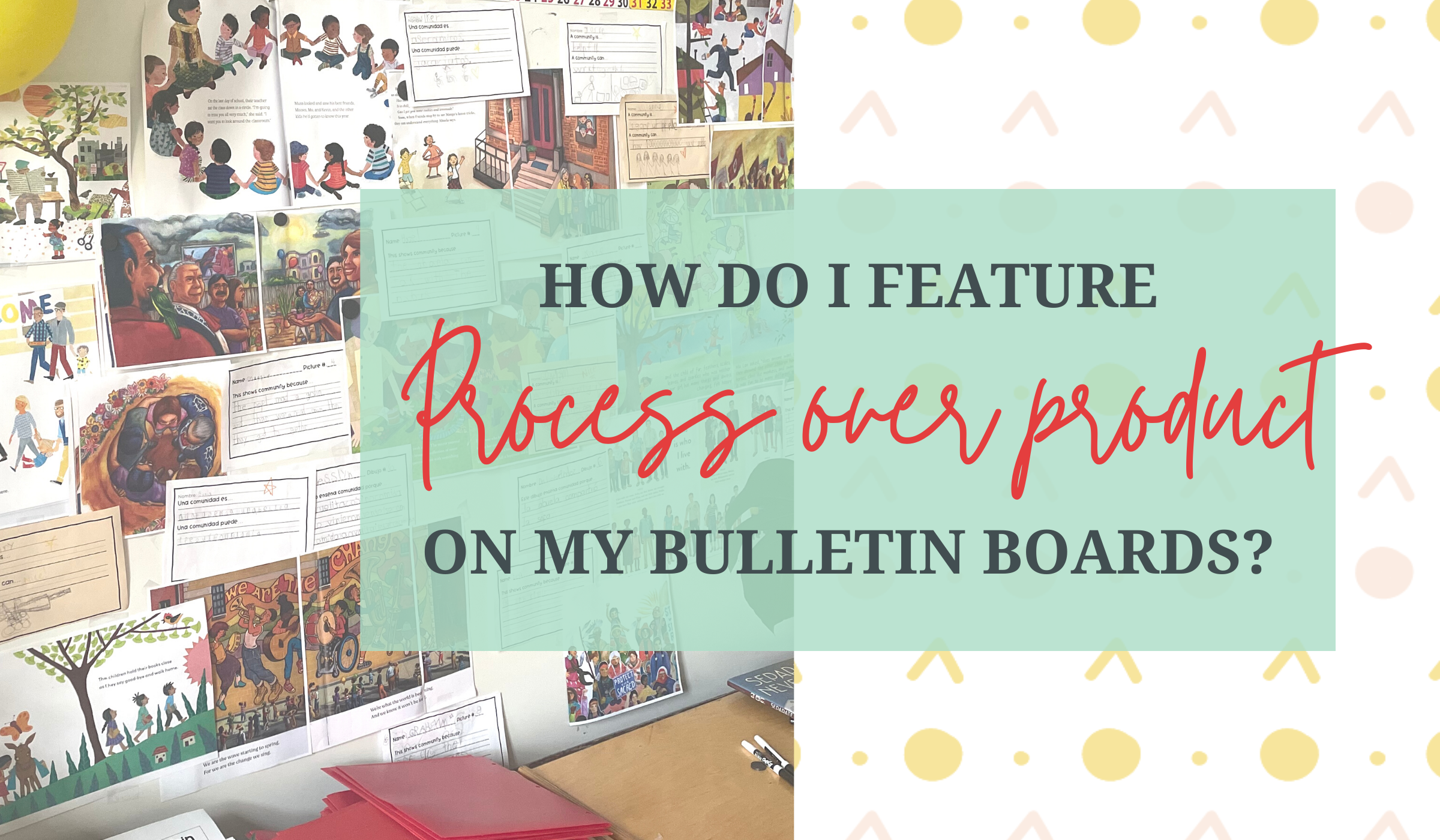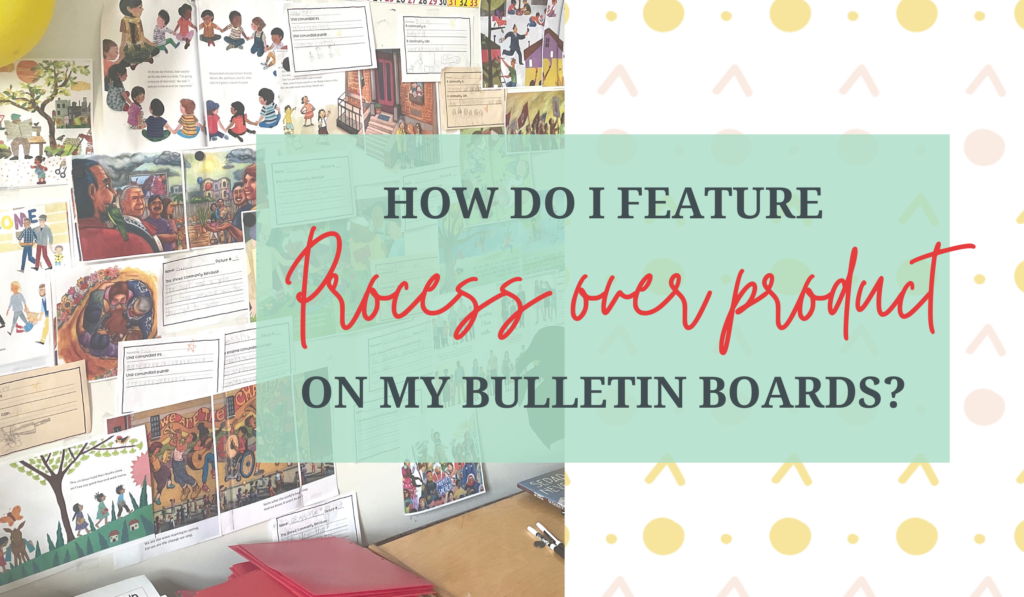
It’s time for Open House or Curriculum night or Conferences and… that means a bulletin board. You quickly search for “bulletin board ideas for elementary” and see picture perfect boards! They’re lovely!
But they also seem a little… rote? A little too shiny and neat for what actually goes on in your learner centered classroom. Am I the only one who feels this way?
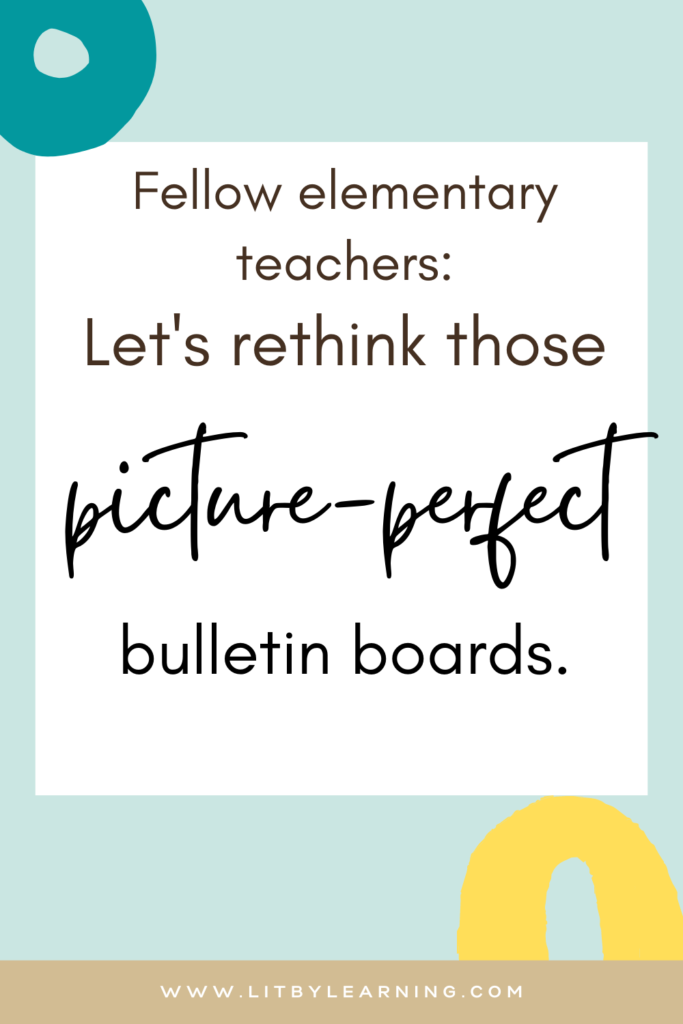
In my learner led classroom, we’re frequently in the midst of a student-led inquiry. Things are messy and in process, not polished and neat. What can it look like to highlight process over product in a way authentic to us? How can we meaningfully show stakeholders all of the hard work that is happening in our learner centered classrooms?
Read on for some simple ideas to display and celebrate the learning process on bulletin boards and beyond today!
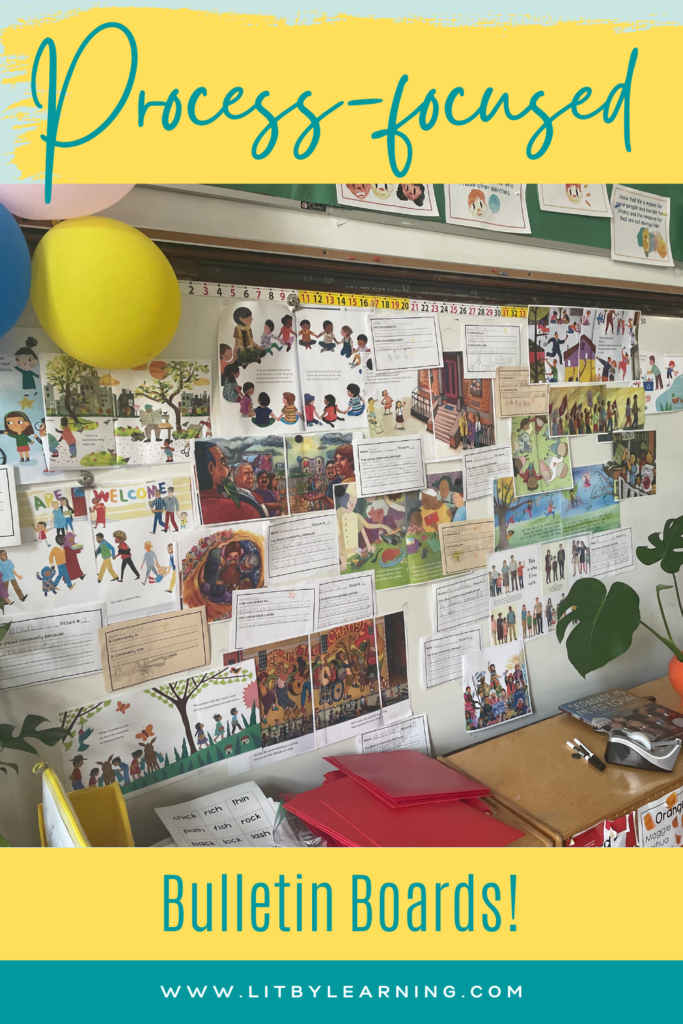
Why feature process over product?
This is a great question! For me, it comes down to being learner centered. Students have spent most of their time and energy involved in the process of learning – not just creating the final product. When we centralize the process over the product, it communicates that we honor their hard work: their grappling, questioning, and curiosity.
How highlighting process over product benefits students – and others!
Maybe you’re still not convinced: after all, the teacher next door to you has a pinterest-worth bulletin board that gets oohhed and ahhed by everyone who walks by.
How does highlighting the learning process over product benefit all classroom stakeholders?
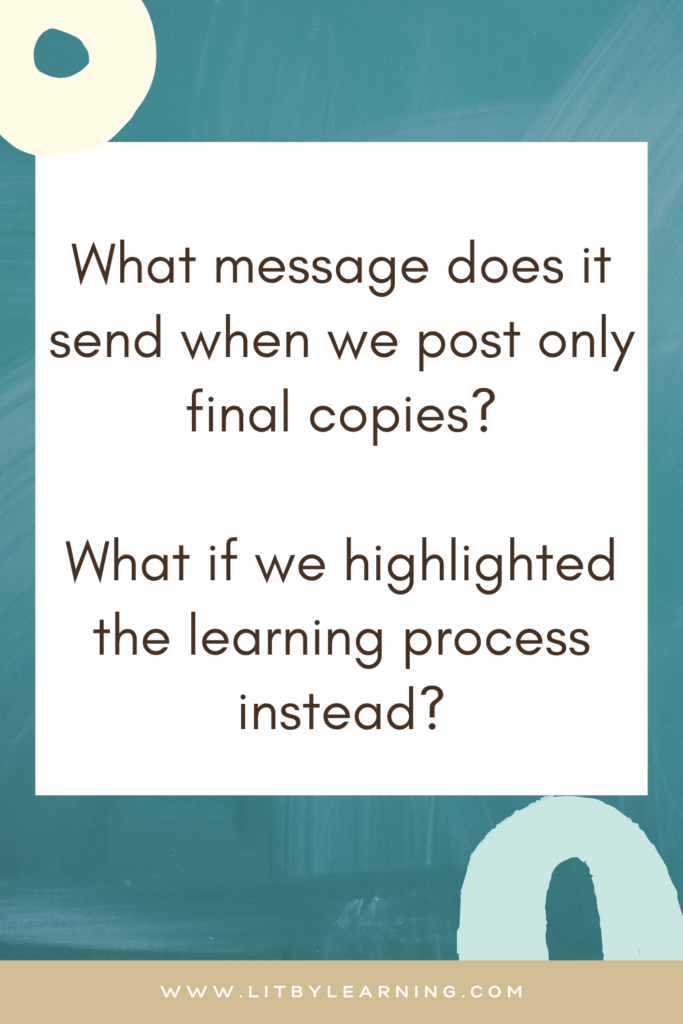
- Students: Process-Based bulletin boards show students how much you value their in-between, not just their final project. Secondly, students can co-create the bulletin boards or learning displays with you as a way to track their learning throughout the unit. The display is then not only a helpful cue to remember their learning, but also a source of deep pride!
The display is then not only a helpful cue to remember their learning, but also a source of deep pride!
- Parents & Guardians: Seeing the learning process spelled out explicitly can help at-home grown ups understand more deeply what their child is working on at school. It can help them cross the bridge between the couple-word utterances they get out of their student after the end of a long school day and the wonderful work up on the classroom walls. This, in turn, better positions parents and guardians to be more effective in supporting their child’s education at home!
- School personnel: Your process-based display can also benefit your administration and other teachers! What a wonderful way to get an understanding about all of the hard work students are doing in the classroom? What easier way to get a pass-by professional development and ideas to use in their own work? Share your students’ (and your!) brilliance with your co-workers.
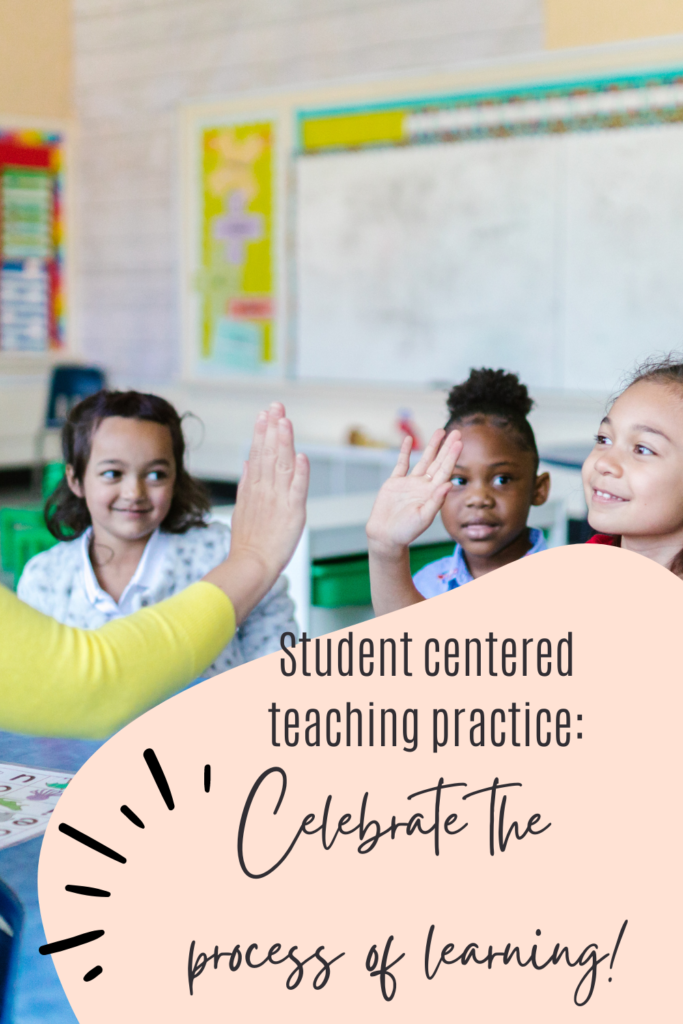
Some process over product display ideas
You are on board with creating a more process-centered learning display, but what does that look like practically? How can you get started? No more searching “bulletin board ideas for elementary” the night before conferences – here are some ideas of what to include!
Display essential questions and big ideas
This is a great starting place for your process-based board. At the outset of the student-led inquiry, display the essential questions your learners will be working to address. I’d also suggest gathering your students’ initial responses and including some of those. This makes for a great reference point as students continue to go deeper in their thinking!
Pin up authentic student work
This first idea seems obvious, but instead of including just the final products, include student work at each step of the inquiry or unit! Save their questions, their incorrect hypotheses, and their marked-up rough drafts to illustrate the learning process on your display!
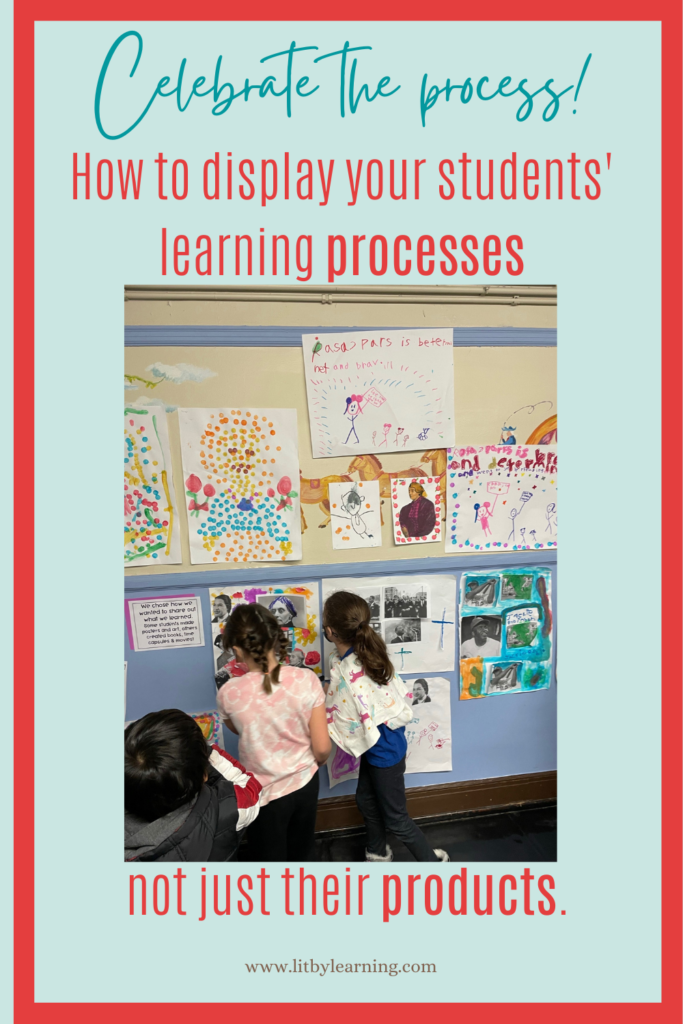
Feature action photos
You know the saying: “a picture is worth a thousand words.” Include pictures of your students in your process of learning display! Using nothing fancier than your phone, capture the raised hands of a class discussion or the 1:1 turn and talks after a read aloud. Grab snaps of students during the brainstorming or rough draft stages of their writing. Bonus points: include student-written captions about what is happening in the picture!
Type up simple process narratives with a tie to learning objectives
Using simple temporal words (first, second, then, last), type of descriptions of what happened in class. For example: “First, we looked at pictures of different communities from around the world.” These will help cue your students for student-led conferences and also are helpful for grown-ups to understand their children’s learning process.
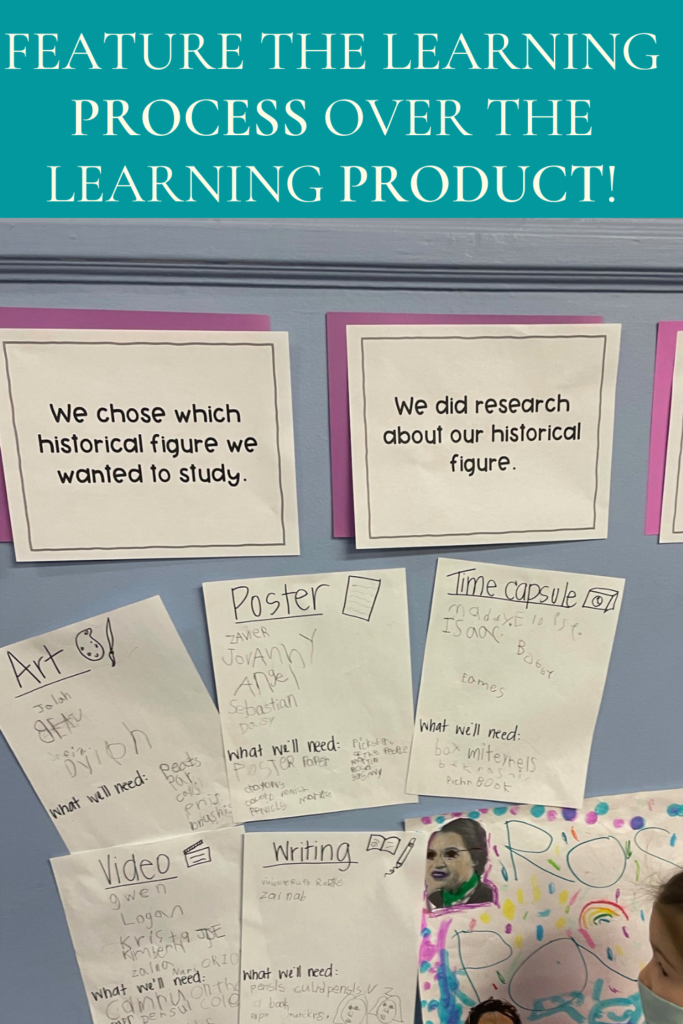
Delineate the process of inquiry
Using simple child-friendly language, display the steps of the investitgation process as they come up throughout the student-led inquiry. I use these IB Inquiry Steps in my International Baccalaureate classroom, but it could look different for your learning space. Clearly marking out these steps helps students internalize the inquiry process and track where they are in the unit.
Incorporate student quotes and reflections
There is nothing better than when students can state their learning more eloquently than we ever could. Capture those “a-ha!” moments and add them to the learning display, citing the brilliant student of course.
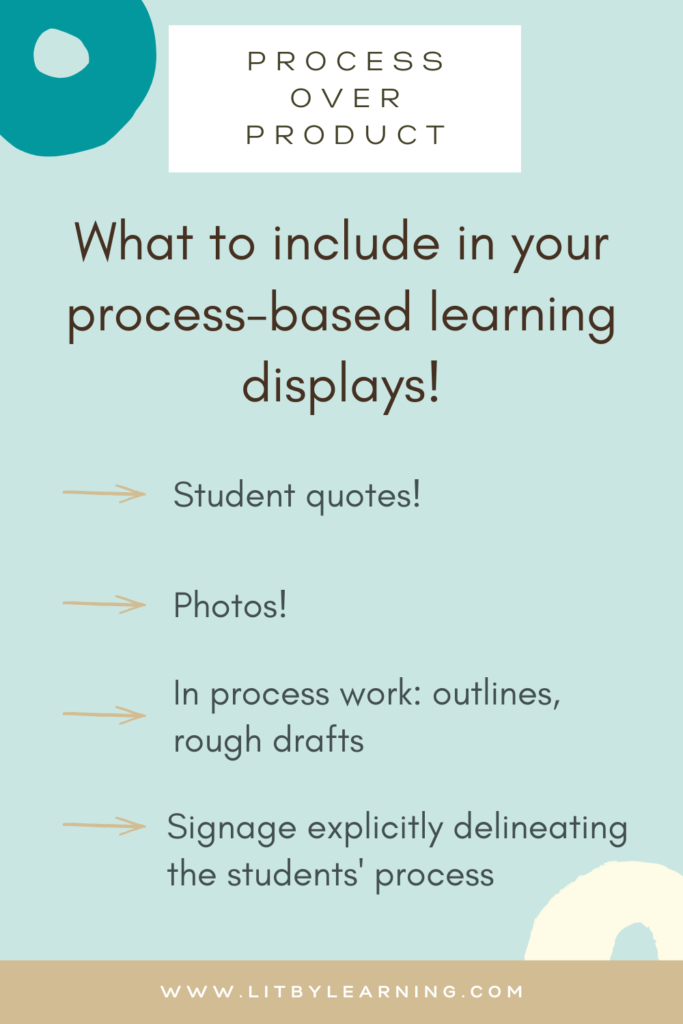
Process over Product Display Inspiration
Hopefully this post has provided you with some great ideas to help highlight the learning process on your bulletin boards and other learning displays! If you’re looking for more inspiration, make sure to check out these other teachers’ amazing ideas!
Sadie Phillips over at Literacy with Miss P has an entire blog post about “working walls.” Talk about #goals in learning process displays!
An ever-evolving working wall is a fantastic way to model great writing, amazing vocabulary and to celebrate children’s writing journey. It’s not simply a static display that celebrates children’s finished work (although celebration of writing and learning is important). Working walls are a public display of the learning process – or the writing process – and they should change daily.
Sadie Phillips, “Harnessing the Power of Working Walls” (emphasis mine)
I also really enjoyed checking out this post by Melody Joy and Jee Young over at “2 Apples a Day.” Fellow IB educators, they show how they use IB Learning Walls to track their learning process.
Did you get your FREE Learner Led Classroom Guide?
What are you waiting for? Click below to grab your FREE guide to a more learner centered classroom today!

